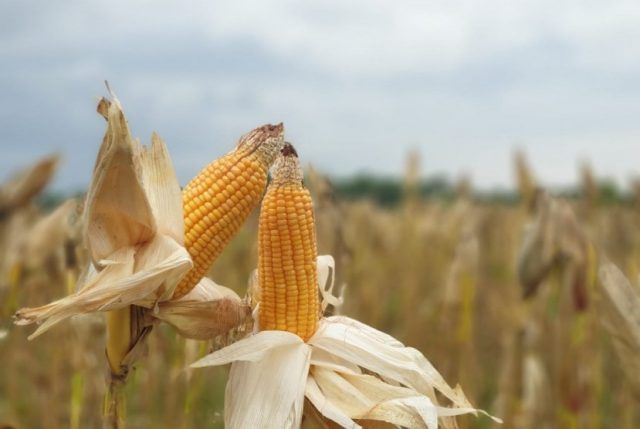Penetrated Overseas Market, Here Are Some Interesting Facts About Hybrid Corn

Penetrated Overseas Market, Here Are Some Interesting Facts About Hybrid Corn
(Istimewa)Corn is part of the staple food as a source of carbohydrate recommended for a balanced diet by the Ministry of Health. Like other whole grains in the carbohydrate category, corn contains high fiber that is important for the control of blood cholesterol levels. As part of food recommended for a healthy and balanced diet, corn has become a high-demand commodity. Roast, boil, or incorporated with stir-fry vegetables, corn can easily be added as a sweet and crunchy addition to any meal.
Cultivated in tropical and subtropical areas, corn can be found growing in the highland or lowland of Indonesia. There are many types of corn with each characteristic and superiority that are suitable to be grown in all areas around Indonesia. One popular type of corn among farmers is hybrid corn or jagung hibrida.
Hybrid corn was first programmed by the Indonesian government to achieve self-sufficiency and export targets. The domestic demand for corn itself increases by 3,77% every year, this pushes the government to find a way to secure sufficient production of corn by increasing productivity but at the same time lowering production costs for farmers.
The hybrid corn is a type of direct result from a crossing of two elders with superior characteristics or traits, the result being that the hybrid will inherit the characteristics or traits. Some of the desired characteristics of hybrid corn are high yields and resistance to major pests or diseases. With the superior trait of hybrid corn, farmers will have a higher productivity rate and more resilient crops that are resistant to natural threats.
Efforts done by the government
Since 1983, the Indonesian government has increased its hybrid corn development program supported by private company participation, increasing farmer knowledge about hybrid corn cultivation, and supported by higher government research and development budgets. As reported from Balitbangtan or agricultural research and development agency in the Ministry of Agriculture website, it’s recorded that in 2016 there are 39 hybrid corn varieties released. These varieties are needed because corn production areas in Indonesia are very diverse in agro-climatic conditions, each of which requires appropriate varieties. Varieties that are tolerant to environmental stress are an important component in the stability of corn production.
Suwandi, Director General of Food Crops, Ministry of Agriculture, said that several corn production centers are currently able to reach the production target of 8 to 9 tons per hectare. The government’s efforts, such as the Propaktani program, to boost corn production provide maximum results to meet national needs. Propaktani or Food Crops Corporation Program started back in 2019, intending to streamline the farm to market in a corporation pattern.
“The Ministry of Agriculture under the command of the Minister of Agriculture Syahrul Yasin Limpo has Food Crops Corporation Program (Propaktani) to increase production and exports so that the agricultural sector becomes stronger as a support for the national economy,” said Suwandi as reported from liputan6.com.
One region that implemented the Propaktani program is Bone Regency in South Sulawesi to produce hybrid corn seeds. The Ministry of Agriculture committed to helping the farmer in Bone Regency to produce hybrid corn seed for the demand in the region.
“There is drip irrigation technology, seed technology, assistance for Balitser and BPTPH, to dryers that we provide for farmers,” said Fitriyani Head of the Department of Food Security, Food Crops, and Horticulture of South Sulawesi Province as reported from pertanian.go.id.
Benefits of hybrid corn
Hybrid corn is designed to have a higher production rate, it can reach 8-12 tons per hectare. Other than high production rate, several hybrid corn varieties are designed to be resilient to the environment where it is grown. The corn production areas spread around Indonesia means each area has its weather and climate condition that requires different tending needs. These needs are met with suitable varieties of hybrid corn.
Balitbangtan or agricultural research and development agency also releases superior varieties of hybrid corn. These corns are produced with the contents in mind. Such as the pulut corn that has a high amount of amylopectin, up to 90%. This variety has a more savory and smooth flavor that is usually used as a base for other corn products such as instant corn rice and instant grits. Other varieties are the Quality Protein Maize (QPM) that has twice as many nutrients as regular corn. Packed with amino acid, lysine and tryptophan, this variety can be used as an alternative to reduce dependence on staple food such as rice and help the prevention of malnutrition.
Planting hybrid corn
Planting the hybrid corn starts with the right seed. Certified hybrid corn seeds that are resistant to pest, disease and suitable for the land where the corn is being grown is preferable to produce satisfactory results.
A few things to keep in mind when planting corn are the climate and the soil. Preferable climates for corn are subtropical to tropical with the optimum temperature of 21-34 C. Ideal rainfall is 85-200 mm/month and evenly distributed with land that is exposed to direct sunlight for at least 8 hours per day. The soil itself needs to have an acidity level (pH) of 5,5-7,5 if the soil is found to be lacking, then dolomite or agricultural lime can be used. Loose soil is also important when planting corn, if the soil is not loose enough then the soil can be plowed beforehand.
Then the seed can be planted to the prepped beds that are ideally about 20 cm with 2 seeds per planting hole. Keep in mind to add a space around 10 cm between each seed to let the plant grow. After the plantain hole is covered, the seeds will grow after about 47 days. Maintenance can be done periodically after the plant grows about 5-10 cm until the harvest time arrives.
